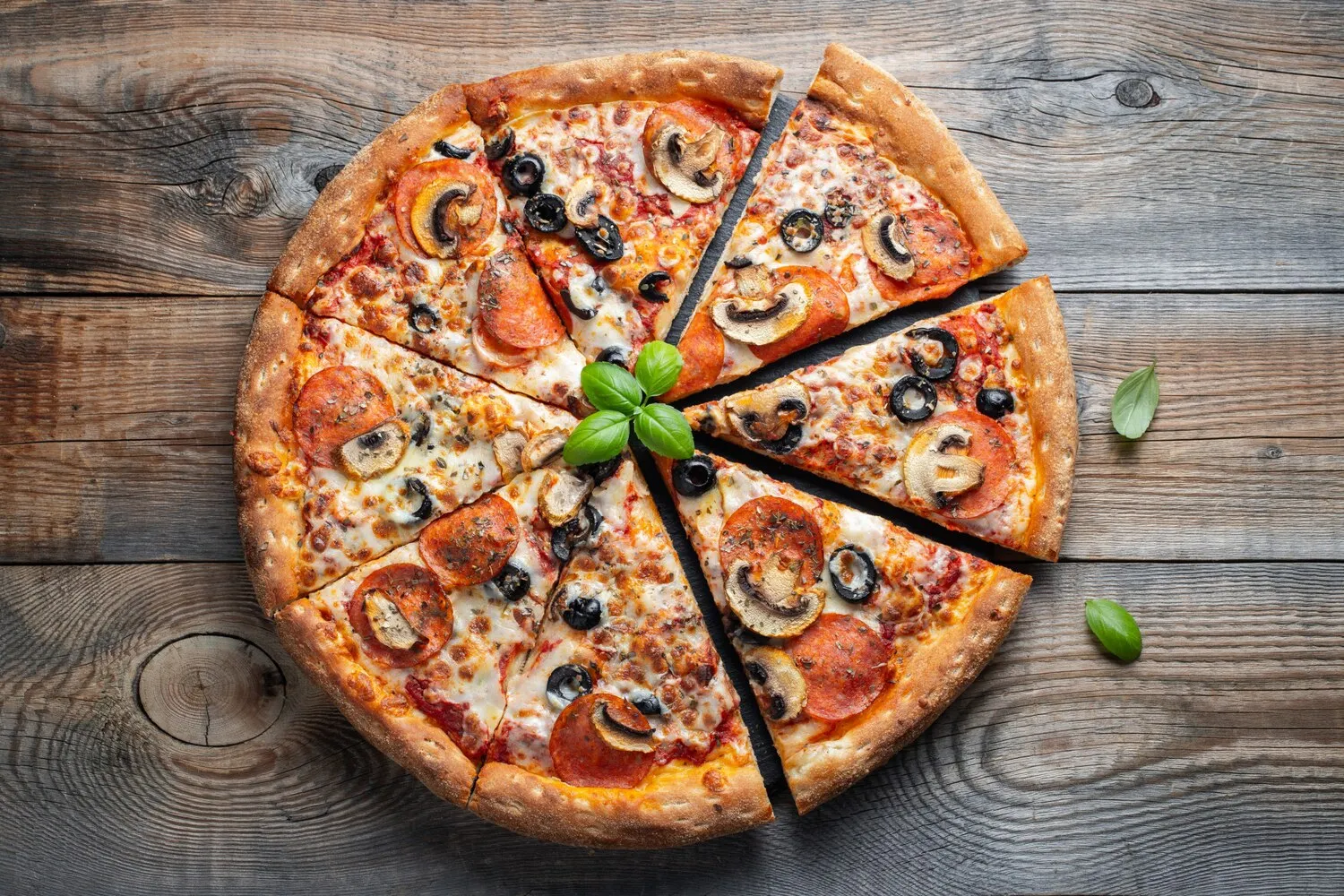
Pizza
Mezza Libbra offers a variety of pizzas, which are frequently mentioned in reviews.
Nutrition Facts
* The % Daily Value (DV) tells you how much a nutrient in a serving of food contributes to a daily diet. 2,000 calories a day is used for general nutrition advice.
Pizza's origins can be traced back to ancient civilizations using flatbreads. Ancient Greeks, Egyptians, and Romans consumed flatbreads with oil and spices. However, the modern pizza as we know it evolved in Naples, Italy, during the 18th and 19th centuries, with the addition of tomatoes, which had been brought from the Americas.
Pizza is deeply ingrained in Italian culture and has become a global phenomenon, representing sharing, community, and simple pleasures.
Family Meal
Pizza is often enjoyed as a communal meal, especially within families and groups of friends. Sharing a pizza is a symbol of togetherness and casual enjoyment.
Regional Variations
Different regions of Italy have their own distinct pizza styles, reflecting local ingredients and culinary traditions. Neapolitan pizza is known for its simplicity and fresh ingredients, while Roman pizza is often thinner and crispier.
Global Adaptation
Pizza has been adapted and localized around the world, with regional variations incorporating local ingredients and catering to local tastes. This adaptability has contributed to its worldwide popularity.
Pizza boasts a diverse range of flavors, depending on the toppings and style. The core flavors are typically savory, tangy, and sometimes slightly sweet.
The flavor profile primarily comes from the interplay of the dough (typically made with wheat flour, water, yeast, and salt), tomato sauce (which provides acidity and sweetness), mozzarella cheese (offering a creamy, milky richness), and various toppings like meats (salty pepperoni, savory sausage), vegetables (bitter peppers, earthy mushrooms), and herbs (fragrant basil, pungent oregano). The specific blend depends greatly on the chosen pizza style.
Dough Preparation
Proper dough fermentation is crucial for a flavorful and airy crust. Allow the dough to rise slowly in a cool environment for optimal results.
Oven Temperature
A hot oven is essential for achieving a crispy crust and properly melted cheese. Ideally, use the highest temperature your oven can reach.
Ingredient Quality
Using high-quality ingredients, such as fresh tomatoes, mozzarella, and olive oil, can significantly enhance the flavor of your pizza.
Pizza Stone/Steel
Using a pizza stone or steel helps to retain and distribute heat evenly, resulting in a crispier crust. Preheating the stone is essential.
Explore additional Pizza dishes and restaurants
Explore PizzaDiscover top dining spots and culinary experiences in Udine.
Explore UdineLearn more about the food culture, restaurant scene, and culinary heritage of Italy.
Explore Italy